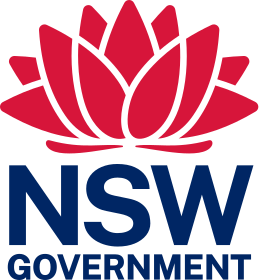Rumble strip installation - New safety measures for NSW Highways
Project overview
The NSW Government has committed $46 million over the next three years to install rumble strips and enhance line markings on key regional routes. More than 2700 kilometres of rumble strips – the equivalent of driving from Sydney to Adelaide and back again will be installed along regional NSW highways to combat driver fatigue and save lives on country roads.
Latest news
April 2024 – Rumble strip installation begins on Mid-Western Highway
Transport for NSW is installing rumble strips (also known as Audio Tactile Line Marking) on sections of the Mid-Western Highway between Bathurst and Cowra.
Work will start on Monday 15 April 2024, and we expect to complete this part of the ATLM project by early June 2024, weather permitting.
Read the project notification (PDF, 320.55 KB) or media release here.
Jan 2024 – Rumble strip installation commences on Mitchell Highway
Transport for NSW is installing rumble strips (also known as Audio Tactile Line Marking) across more than 500 kilometres of the Mitchell Highway between Orange and Bourke.
Work will start on Monday 29 January 2024, and we expect to complete this part of the ATLM project by end of May 2024, weather permitting.
Read the project notification (PDF, 731.4 KB) or media release.
Jan 2024 – Castlereagh Highway rumble strip installation now complete
Transport for NSW has completed installation of rumble strips (also known as Audio Tactile Line Marking) across more than 189 kilometres of the Castlereagh Highway between Dunedoo and Lithgow.
Aug 2023 – Castlereagh Highway rumble strip installation
Transport for NSW is installing rumble strips (also known as Audio Tactile Line Marking) across more than 189 kilometres of the Castlereagh Highway between Dunedoo and Lithgow.
Work will start on Monday 21 August 2023, and we expect to complete this part of the ATLM project by December 2023, weather permitting.
Sep 2022 - Rumble strip installation
Transport for NSW is installing rumble strips (also known as Audio Tactile Line Marking) across more than 300 kilometres of the Golden Highway between Dubbo and Singleton.
Work will start on Wednesday 5 October 2022, and we expect to complete this part of the ATLM project by December 2022, weather permitting.
Aug 2022 - Rumble strip installation
Transport for NSW is installing rumble strips (also known as Audio Tactile Line Marking or ATLM) across more than 400 kilometres of the Kamilaroi Highway between Wee Waa and Willow Tree. Work will start on Monday 22 August, and we expect to complete this part of the ATLM project by December 2022, weather permitting.
Jul 2022 - Rumble strip installation
Transport for NSW is installing rumble strips (also known as Audio Tactile Line Marking or ATLM) across appropriate sections of more than 500 kilometres of the Kamilaroi Highway between Bourke and Wee Waa and more than 500 kilometres of the Gwydir Highway between Grafton and Moree. Work on these two highways started in May 2022.
The second section of the Kamilaroi Highway will be carried out in August 2022 between Wee Waa and Willow Tree. These two highways are the first regional highways in the North and West regions of NSW that will be undertaking the rumble strip installation project under the Saving Lives Accelerated Program (SLAP).
Work will be carried out between 7am and 6pm seven days a week. Night work may be required between 7pm and 6am seven days a week at some locations. We expect to complete these two highways by December 2022, weather permitting.

Project information
Background
Transport for NSW is installing rumble strips (also known as Audio Tactile Line Marking or ATLM) on the centre and edge lines across more than 2700 kilometres of regional highways to combat driver fatigue and save lives on country roads.
The project is funded by the New South Wales State Government and is part of the Saving Lives Accelerated package, investing $46 million to install ATLM on high-risk rural roads in the next three years. The first stage of the program includes the Cobb Highway (Hay to Moama) Castlereagh Highway (Lithgow to Dunedoo), Golden Highway (Singleton to Dubbo), Kamilaroi Highway (Bourke to Willow Tree), Gwydir Highway (Grafton to Moree) and Oxley Highway (Wauchope to Coonabarabran)
The project to improve safety and reduce the risk of head-on and run-off-road crashes will commence progressively from the end of the May 2022 between 7am and 6pm seven days a week, weather permitting.
Frequently asked questions (FAQs)
What are rumble strips and how do they work?
Rumble strips, also known as Audio Tactile Line Marking (ATLM), are small raised bumps generally placed on the edge lines and centrelines of roads. Rumble strips help prevent crashes associated with driving tired and distraction. They alert drivers or riders when they are drifting out of their lane by generating a distinct sound and vibration. This allows the driver or rider time to correct their path and reduce the risk of a crash.
What are the safety benefits of rumble strips?
Rumble strips are estimated to reduce the likelihood of vehicles departing their lane by up to 25%. When installed with wide centreline, rumble strips can reduce fatalities and injuries from head-on crashes by up to 65%.
How do rumble strips improve safety?
Rumble strips provide a noise and vibratory warning to a driver or rider who has drifted from their lane due to fatigue or poor visibility due to rain or fog.
Rumble strips are intended to allow drivers the opportunity to correct their path when their vehicle comes into contact with them.
This treatment targets run-off-road and head-on crashes. It is also particularly effective in night-time conditions or adverse weather conditions.
Are rumble strips noisy?
Rumble strips are loud enough to be heard by the driver, but not excessively loud. When rumble strips are installed less than 200m of a residential building, assessments are completed to determine any negative potential noise implications for nearby residences and any broader community impacts. In all instances, rumble strips are installed to prevent crashes from occurring and carry significant positive safety impacts.
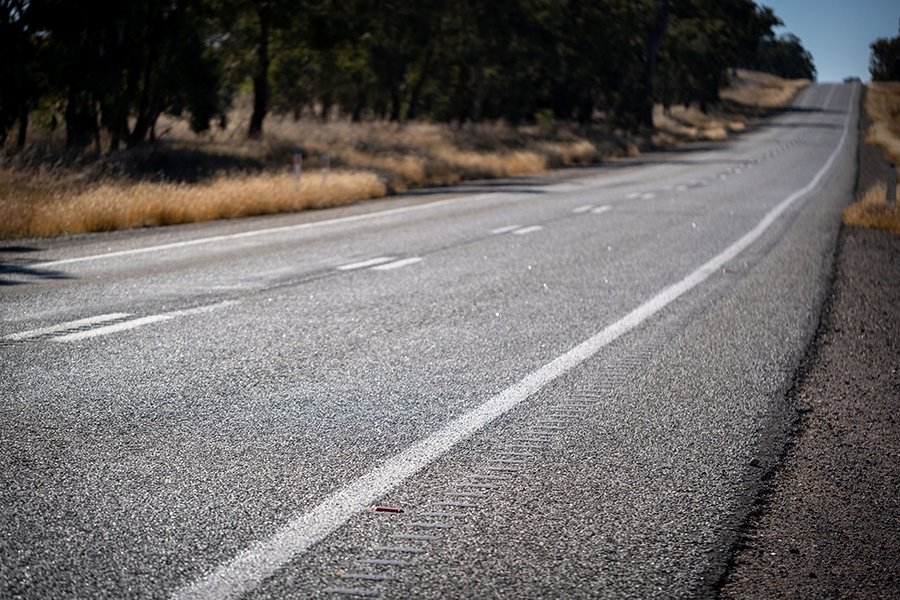
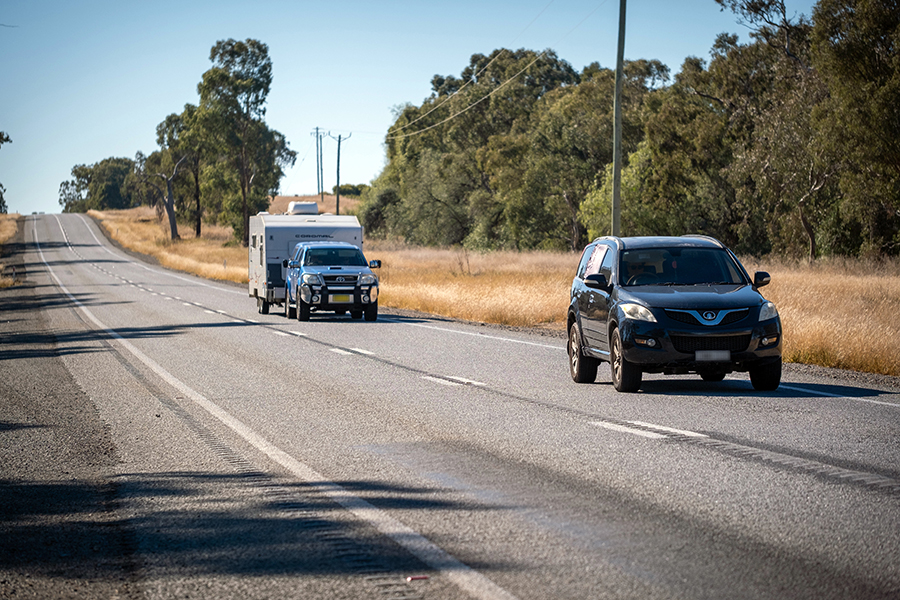
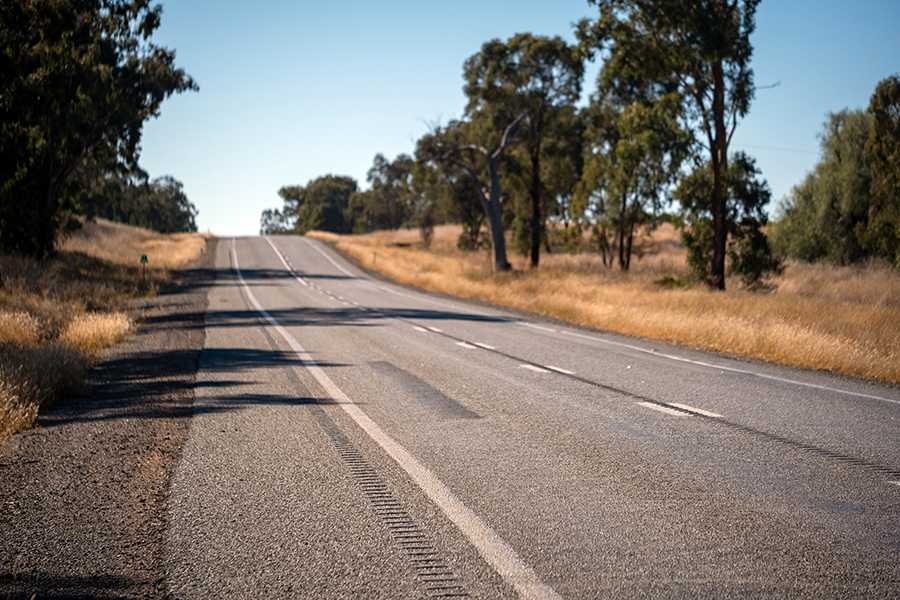
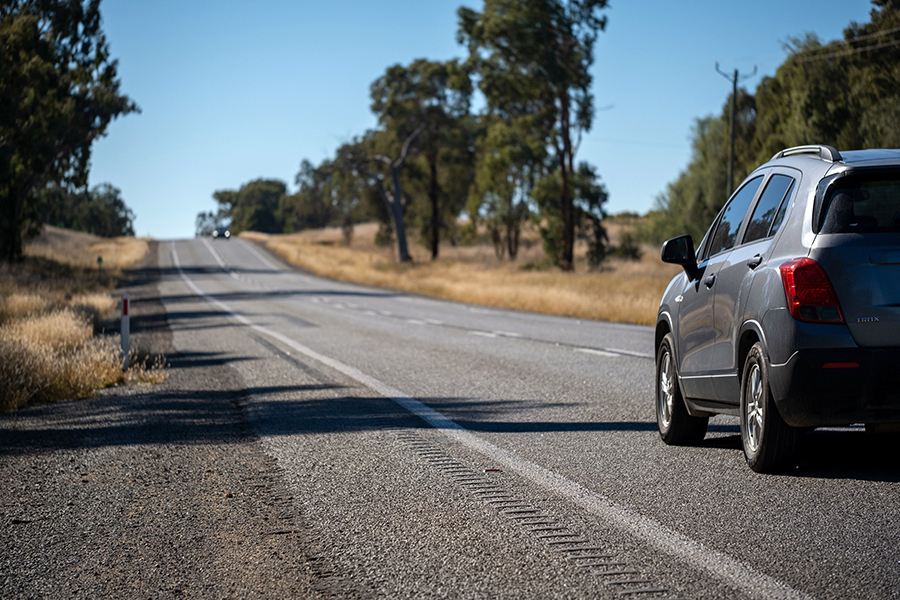
Rumble strips installed on NSW regional highways
Rumble strips installed on NSW regional highways
Rumble strips installed on NSW regional highways
Rumble strips provide safer journeys for motorists
Project documents
Some documents on this page may not comply with accessibility requirements (WCAG).
If you are having trouble accessing information in these documents, please contact us.
Project notifications
- April 2024 project notification (PDF, 320.55 KB)
Mid-Western Highway rumble strip installation - January 2024 project notification (PDF, 731.4 KB)
Mitchell Highway rumble strip installation - August 2023 project notification (PDF, 176.01 KB)
Castlereagh Highway rumble strip installation - September 2022 project notification
Installation of rumble strips on the Golden Highway from Tuesday 20 September 2022. - August 2022 project notification
Installation of rumble strips on the Kamilaroi Highway from Monday 22 August 2022. - May 2022 project notification
Installation of rumble strips on the Kamilaroi Highway from Monday 23 May. - May 2022 project notification
Installation of rumble strips on the Gwydir Highway from Tuesday 24 May
Media releases
- 15 April 2024
Rumble strips to improve safety on the Mid-Western Highway between Bathurst and Cowra - 7 February 2024
Rumble strips to improve safety between Orange and Bourke. - 9 January 2024
Rumble strips make for safer trips on the Castlereagh Highway.
